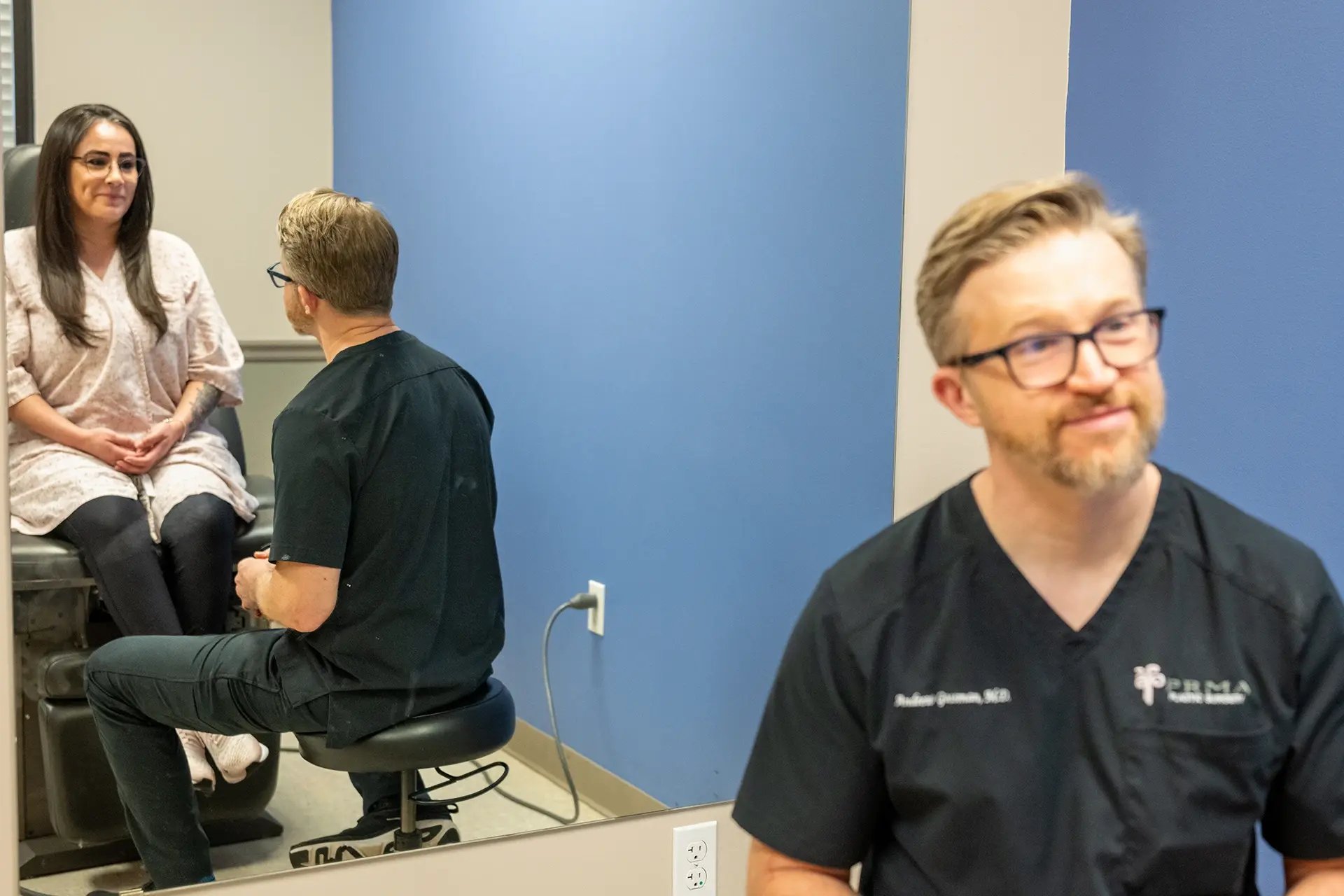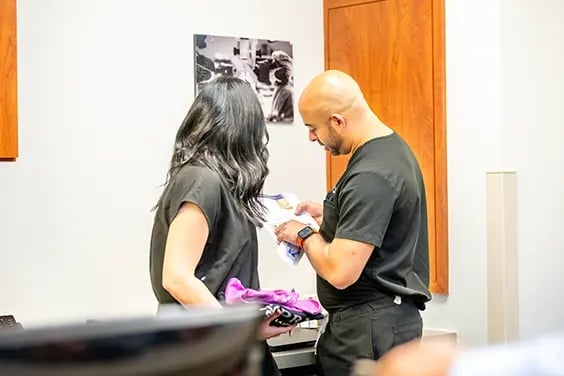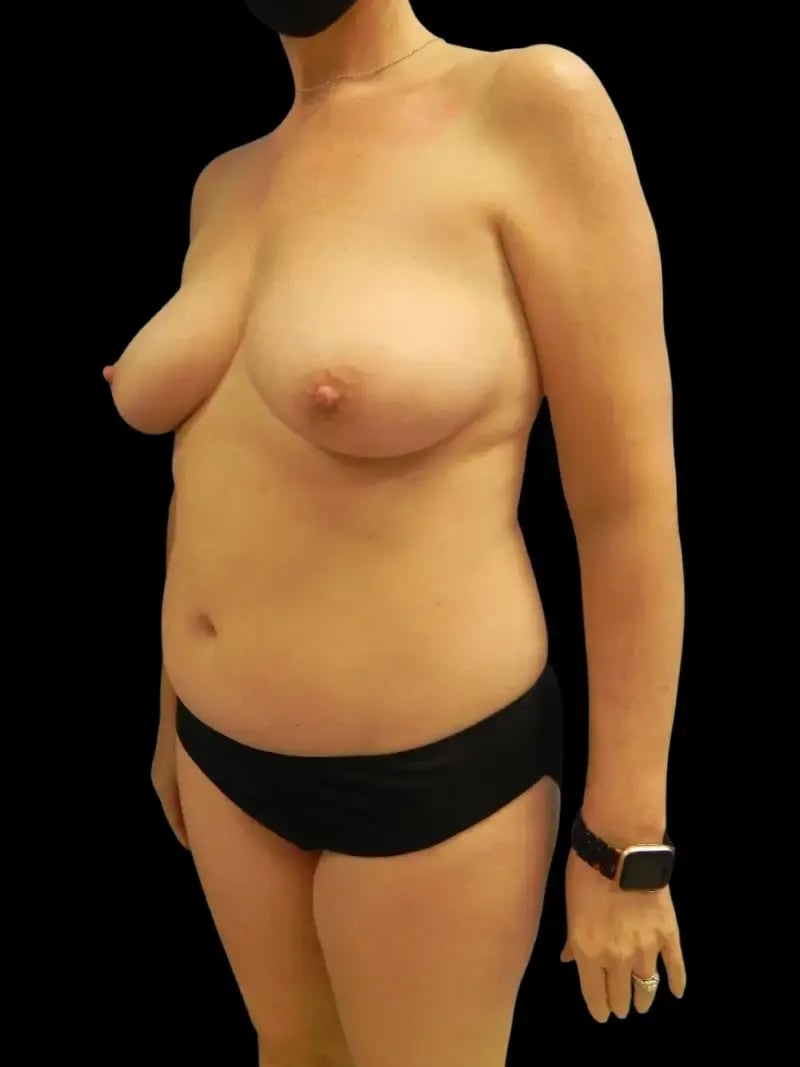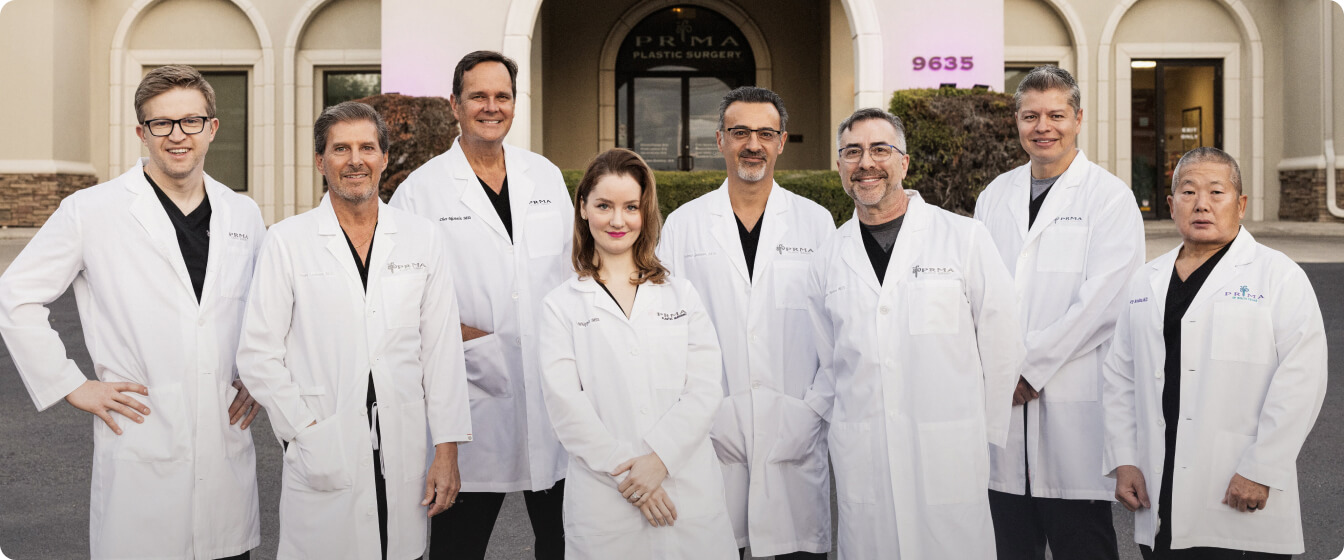
Flap Revision Surgery
What is Flap Revision Surgery?
For many women, natural tissue breast reconstruction using a flap procedure—like the DIEP, PAP, or GAP flap—offers lasting, life-changing results.
However, as time passes, some patients may seek a revision to optimize the appearance of their reconstructed breasts, address subtle asymmetries, improve comfort, or refine areas impacted by healing changes. In other cases, a flap may not have achieved the desired aesthetic outcome due to factors like prior radiation, scar tissue, or unexpected complications.
Whether the original surgery was performed at PRMA or elsewhere, we understand this decision is deeply personal. We’re here to help you feel whole again by improving flap reconstruction results.
Key Information
Breast reconstruction flap revisions are common and may be performed to enhance symmetry, contour, or aesthetics after initial tissue-based flap reconstruction.
Revision can address issues like scarring, volume loss, or changes from healing, radiation, or weight fluctuations.
Not all revisions are cosmetic—some help correct functional concerns like tightness, firmness, or asymmetry.
Revisions are highly personalized—your surgeon will assess your goals and tailor a surgical plan just for you.
PRMA uses advanced techniques like High Def DIEP® for natural-looking results and a dual-surgeon approach to enhance safety and precision.
Insurance often covers revision surgery, especially when medically necessary or related to cancer treatment.
Understanding Your Options
Fat Grafting (Lipofilling)
Scar Revision
Flap Contouring & Reshaping
Symmetry Surgery on the Opposite Breast
What to Expect During Surgery
Your flap revision surgery begins with a comprehensive consultation, where your surgeon will listen closely to your goals, assess your current reconstruction, and outline a customized surgical plan.
Most flap revision procedures are outpatient or involve a shorter hospital stay compared to the original surgery. PRMA’s dual-surgeon technique is used for all flap surgeries, even during revisions, to maximize precision and safety while minimizing time under anesthesia.
After surgery, you can expect a streamlined recovery supported by detailed instructions, ongoing nurse guidance, and attentive follow-up care. We’ll ensure you feel more confident, comfortable, and complete, from consultation to final results.

Before & After








Recovery Timeline
-
Week 1:During the first week, you’ll focus on rest and managing post-operative swelling, bruising, and mild discomfort. Depending on the extent of the revision, most patients go home the same day or after an overnight stay.
-
Week 2:Swelling and bruising typically improve by the second week, and many patients start feeling more mobile and comfortable doing light daily activities. During a follow-up appointment, any sutures or surgical tape may be removed.
-
Week 3-4:You’ll continue to gain energy and mobility. Swelling continues to decrease, and the breast shape becomes more refined. Light exercise (like walking or gentle stretching) may be resumed, but heavy lifting or upper-body workouts should still be avoided.
-
Week 5-6:By now, most restrictions have been lifted. You may return to full activity—including exercise—pending your surgeon’s guidance. Final results start to take shape, although some minor swelling may persist. Scars will continue to soften and fade over time.


The Nation’s Destination for
Sensation Restoration
Am I a Candidate for Flap Correction After Reconstruction?
Flap revision surgery is designed to refine or enhance the results of a previous natural tissue breast reconstruction. Whether your original procedure was performed at PRMA or another facility, our team can help assess if a revision may help you feel more confident and comfortable in your results.
You may be a strong candidate for flap revision if:
- Your reconstructed breast has noticeable asymmetry or contour irregularities
- You’re experiencing firmness, tightness, or discomfort in the reconstructed area
- Volume has changed over time due to weight fluctuations or healing
- You’ve had radiation and are seeing tissue changes or irregularities
- You're unhappy with your reconstruction results from another facility
- You’re considering nipple reconstruction or areola tattooing to complete your outcome
- You’ve developed visible scarring or “dog ears” you'd like refined
- You’re in good overall health and cleared for elective surgery
- You want to improve softness, symmetry, or the natural look and feel of your results
Find Your Surgeon
Will Insurance Cover Flap Revision Surgery?
Insurance will typically cover flap revision surgery, especially when it’s related to a previous breast reconstruction performed after mastectomy. Under the Women’s Health and Cancer Rights Act (WHCRA), health insurance plans that cover mastectomy are also required to cover all stages of reconstruction, including revisions to achieve symmetry or correct complications.
At PRMA, our insurance specialists will work directly with your provider to confirm coverage and obtain any necessary pre-authorizations. We’re here to make the process smooth and stress-free, so you can focus on healing, not paperwork.
For more information, visit [Insurance FAQs] in the patient resource center.

Preparing for Surgery
Learn more about:




